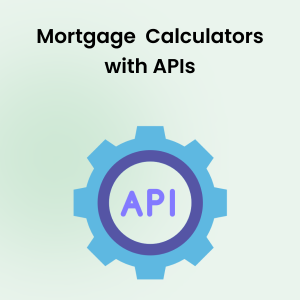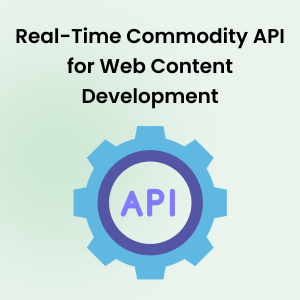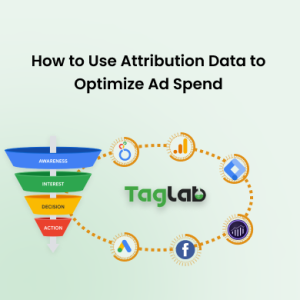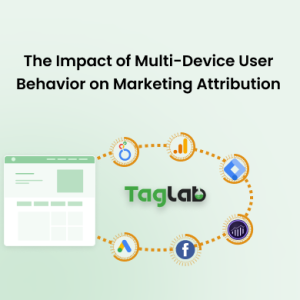Your cart is currently empty!
How Real-Time Commodity Prices Can Level Up Your Content
Understanding Commodity Markets in Simple Terms
Commodity markets revolve around the buying and selling of raw materials that form the backbone of global trade. These materials can include precious metals (like gold or silver), energy sources (like crude oil or natural gas), and a wide range of agricultural products (like coffee, wheat, and corn). Their prices fluctuate constantly, driven by complex factors such as political events, supply disruptions, and shifts in consumer demand.
For a blogger, offering insight into these fluctuations can set your content apart. Instead of presenting static figures or referencing outdated market snapshots, you can offer readers a dynamic view of where prices stand right now. This immediacy not only builds trust but also encourages repeat visits, as people return for the latest insights.
Why Real-Time Commodity Data Is a Game-Changer
In today’s fast-paced digital world, audiences expect immediacy. When readers see that your site is providing prices updated practically by the minute, they start to view you as a go-to source. Trust grows because you’re showing information that reflects current market conditions, not yesterday’s news.
Additionally, embedding live commodity prices opens new doors for monetization. By leveraging a commodity price API, you can create data-driven content that’s valuable to financially savvy readers. Sponsored posts, affiliate marketing, and premium “members-only” sections are all easier to develop when you have robust, real-time information to back your offerings.
How an API Fetches Real-Time Commodity Values
APIs (Application Programming Interfaces) serve as a bridge between your website and external data providers. When you need live price data, you send a request to the API’s endpoint. The API then processes your request—often checking parameters like the specific commodity symbol (e.g., GOLD, OIL, or WHEAT)—and returns a structured response. Typically, you’ll receive JSON data containing the latest price and other market details, which you can then format and display on your site.
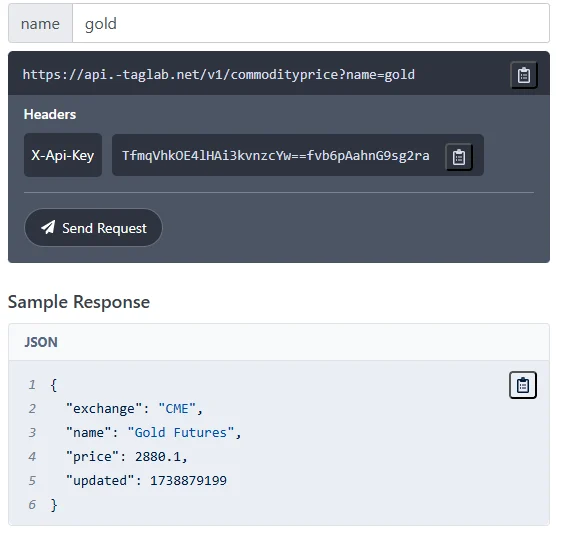 Below is a simple JavaScript example that demonstrates how you might fetch gold prices using a TAGLAB commodity endpoint in JavaScript:
Below is a simple JavaScript example that demonstrates how you might fetch gold prices using a TAGLAB commodity endpoint in JavaScript:
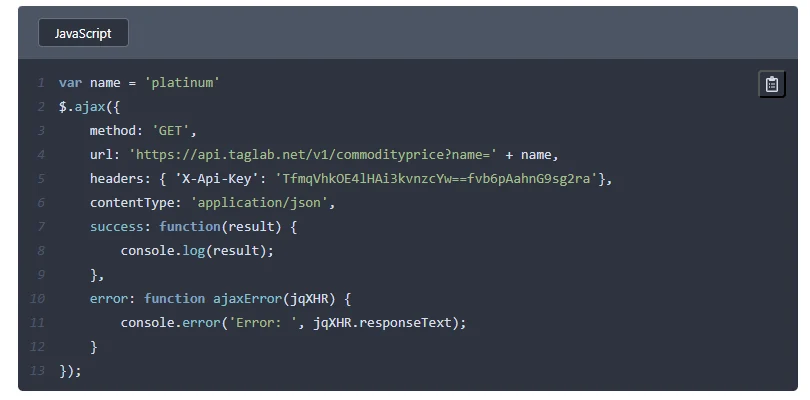 The snippet above outlines a typical workflow:
The snippet above outlines a typical workflow:
- You construct a URL that includes the commodity symbol (
platinum) and any required parameters. - You attach your API key in the request headers to authenticate yourself with the data provider.
- The server responds with the latest market data in JSON format.
- You extract the relevant fields (e.g.,
price) and embed them in your webpage, such as a table or a live dashboard.
Integrating a Commodity Price API into Your Blog
For WordPress bloggers, the process often involves installing a plugin or adding a custom script to your theme’s files. With a custom-built website, you can directly insert the above JavaScript snippet (or a variant of it) wherever you want to show the data. In both cases, the key steps remain the same: sign up for the API service, obtain your API key, and follow the documentation for making requests.
With TAGLAB’s Commodity Price Updated API, you gain reliable, real-time feeds that can be adapted to various content management systems and web frameworks. By displaying up-to-the-minute numbers, you not only give your readers valuable insights but also position your site as a credible, data-driven platform.
Monetizing a Data-Driven Blog
Once your blog is equipped with real-time prices, you can explore revenue streams that benefit from data-driven content marketing. For example, you could develop paywalled sections offering advanced analytics or daily market summaries. You might also partner with financial services or trading platforms that align with your audience’s interests, thereby generating affiliate income. Sponsored posts can be more lucrative when advertisers see you providing consistently fresh data, as it boosts engagement rates and lends an aura of professionalism to your blog.
Conclusion
Transforming a simple hobby blog into a dynamic, data-focused resource needn’t be intimidating. By weaving real-time commodity data into your posts, you provide timely insights that keep readers returning and position yourself as an authoritative voice. Whether your passion lies in finance, economics, sustainability, or general market trends, a well-chosen commodity price API can invigorate your platform and create new opportunities for monetization and growth.
If you’re ready to elevate your blog with real-time market intelligence, consider trying out the TAGLAB APIs. Through seamless integration, you can offer your community up-to-the-minute commodity prices that transform casual readers into loyal followers.
Frequently Asked Questions
What is real-time commodity data, and how does it benefit my blog?
Real-time commodity data provides constantly updated prices for goods like gold, oil, and wheat. By embedding live figures in your blog posts, you become a credible source for timely market information. Readers are more likely to trust—and return to—a site that offers up-to-the-minute insights rather than stale, outdated figures.
How can real-time commodity prices enhance my blog’s credibility?
Showing current prices signals to readers that you value accuracy and relevancy. They’ll see your platform as a dependable resource rather than a generic blog recycling old data. Over time, this reputation helps you build a dedicated audience, potentially attracting new opportunities like sponsored content or affiliate partnerships.
Do I need coding skills to integrate a commodity price API?
Not necessarily. Many API providers offer user-friendly documentation or plugins that simplify the process. Often, you just need to copy a snippet of code or configure a plugin to fetch and display the data. Even if you have minimal coding experience, you can still successfully embed real-time commodity feeds on your site.
Which TAGLAB API is suitable for retrieving live commodity prices?
TAGLAB’s Commodity Price Updated API provides real-time data for a wide range of commodities. Its straightforward integration process and robust documentation make it ideal for both beginners and experienced developers. By using the API, you can share accurate, up-to-date information with your audience, enhancing your site’s value and authority.
